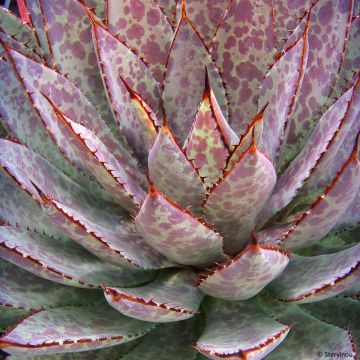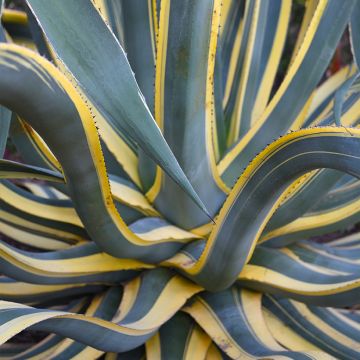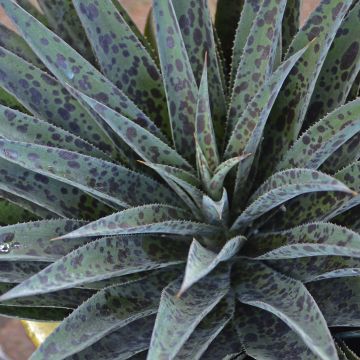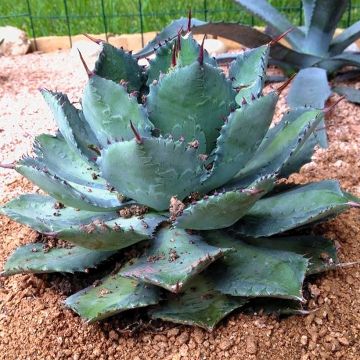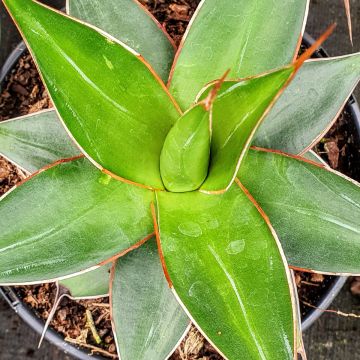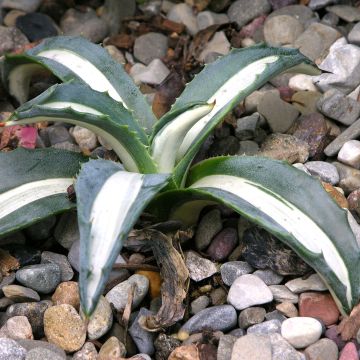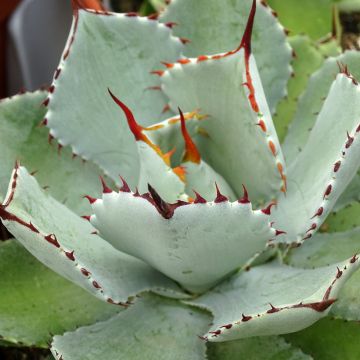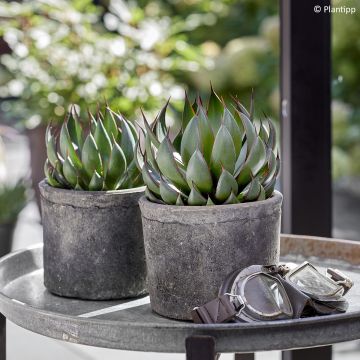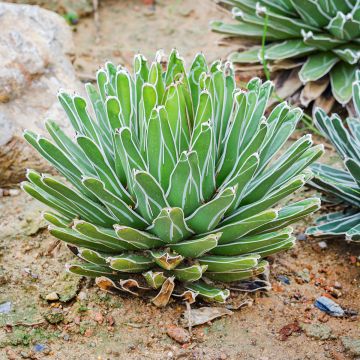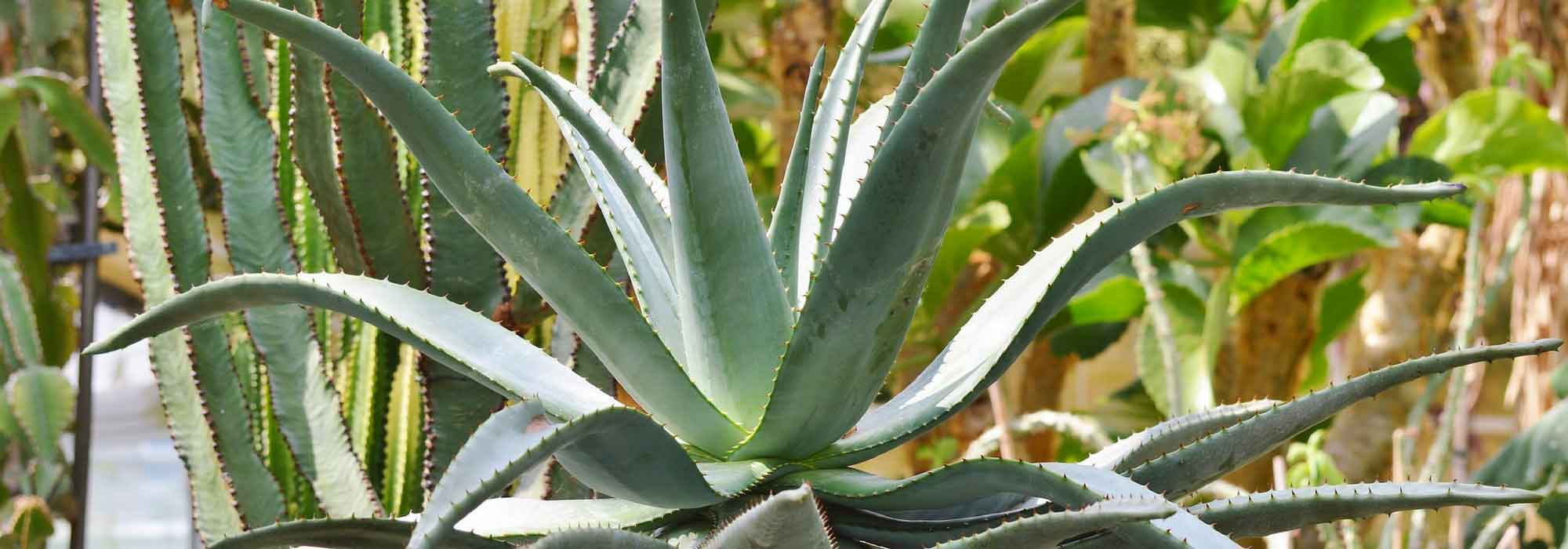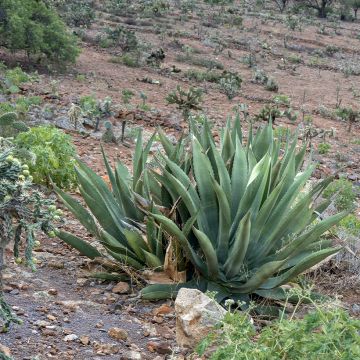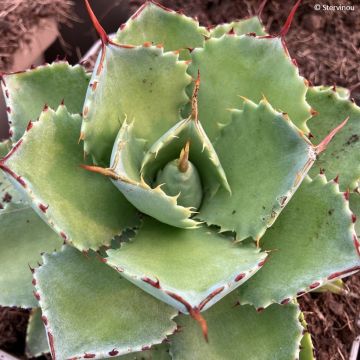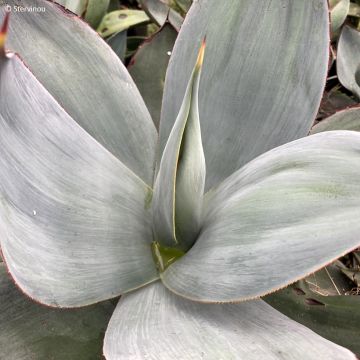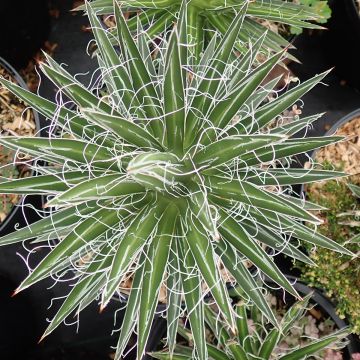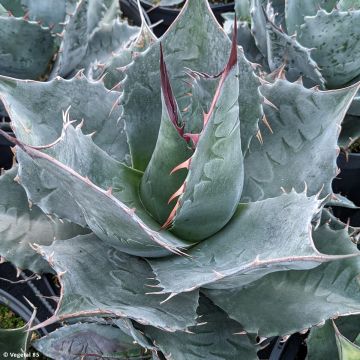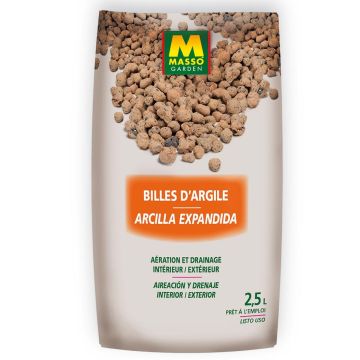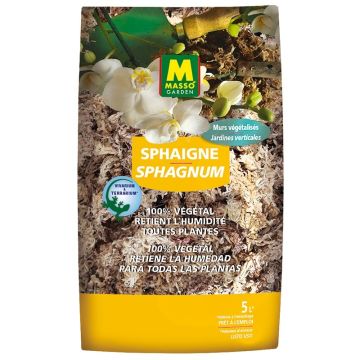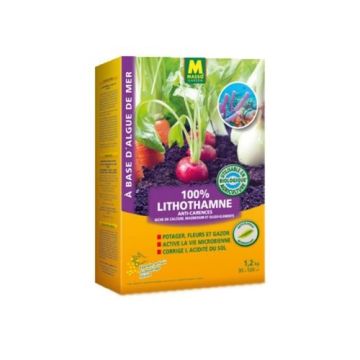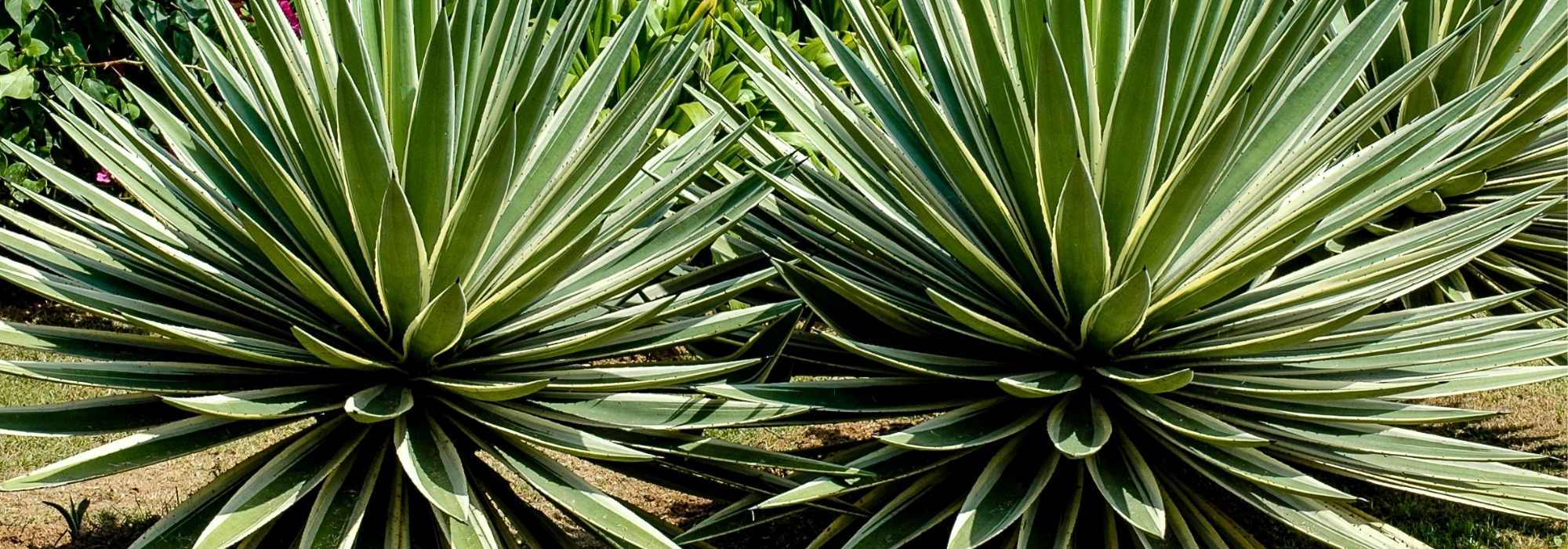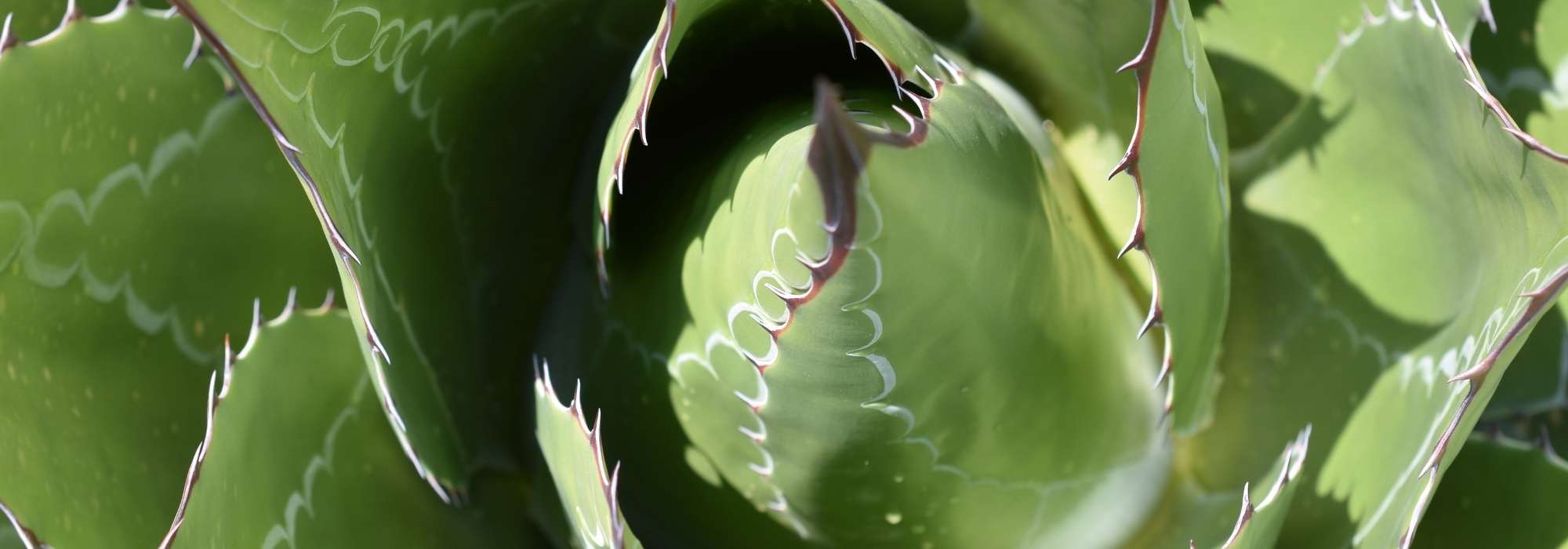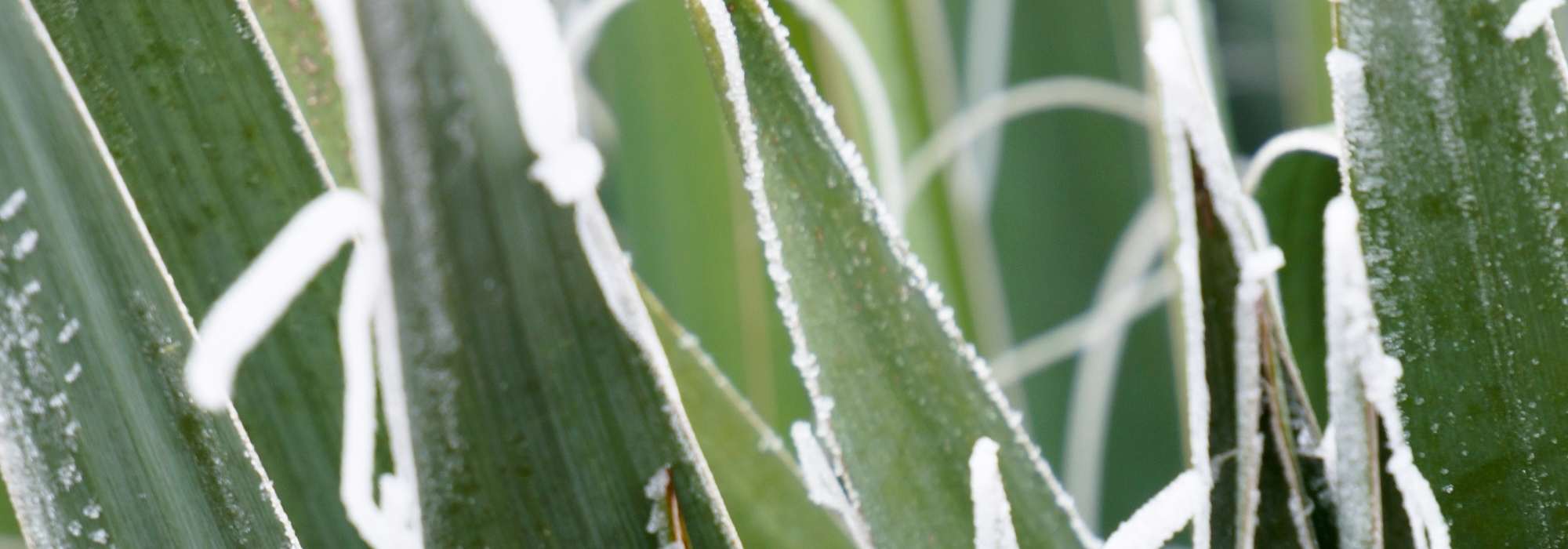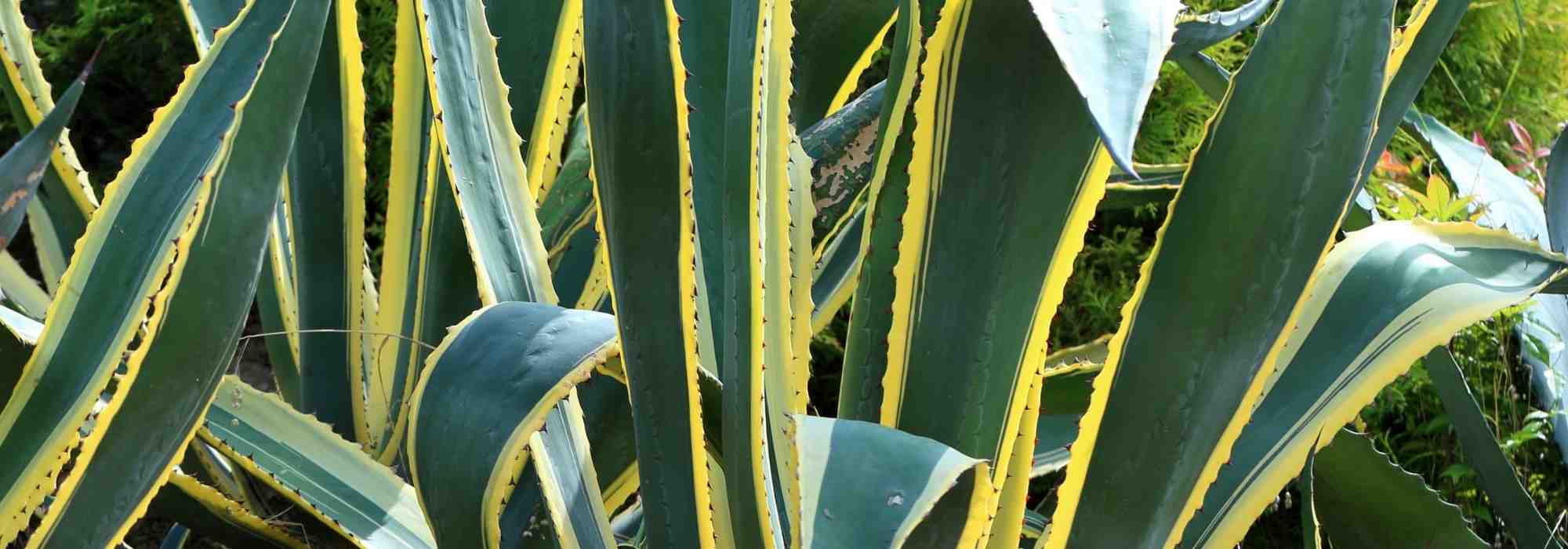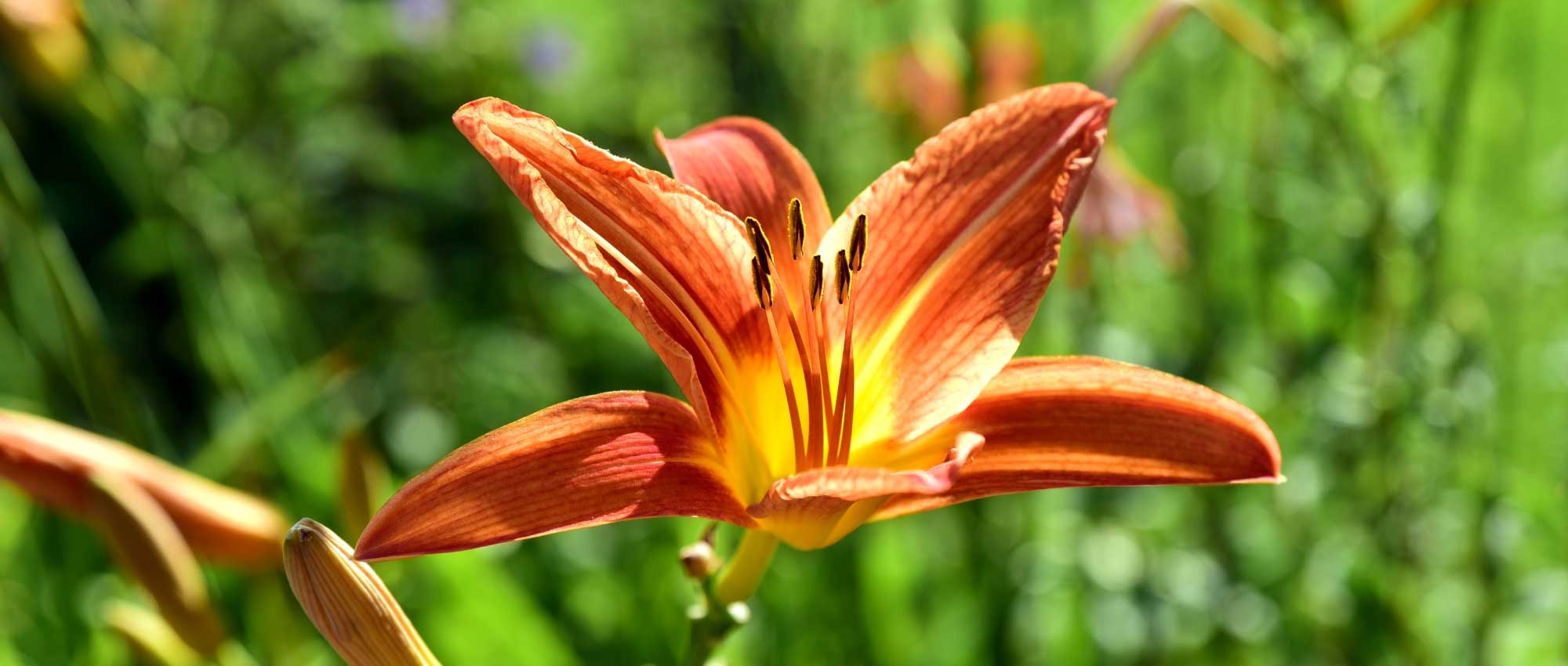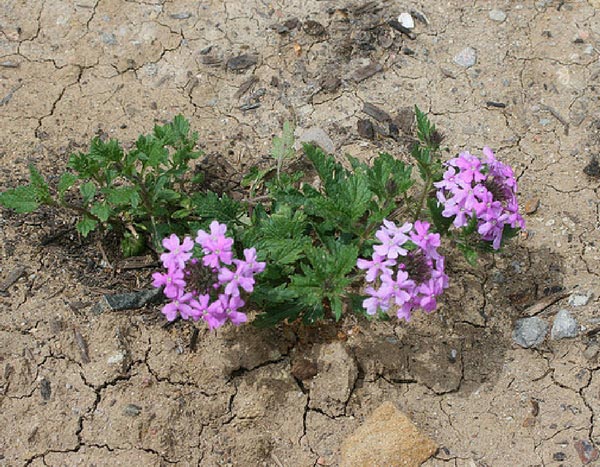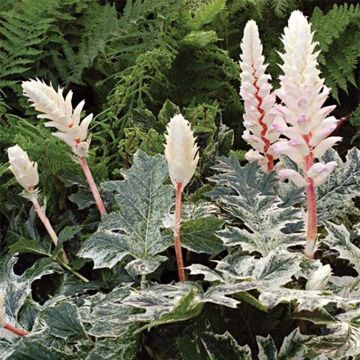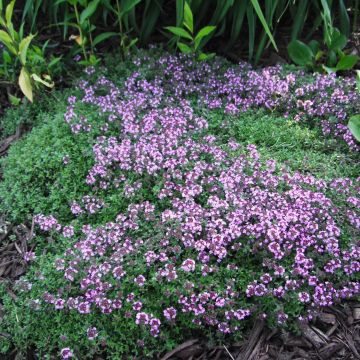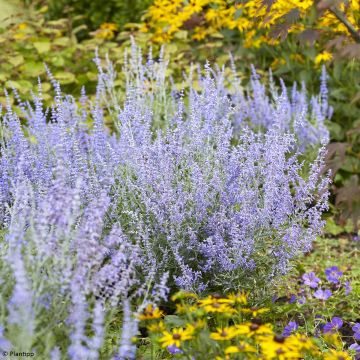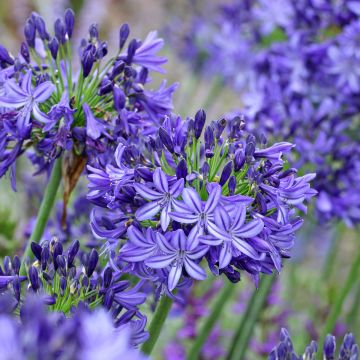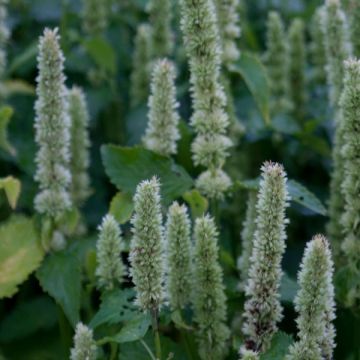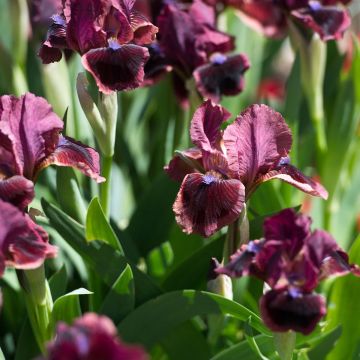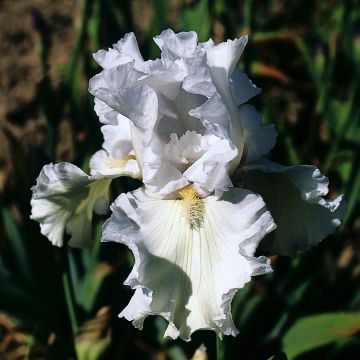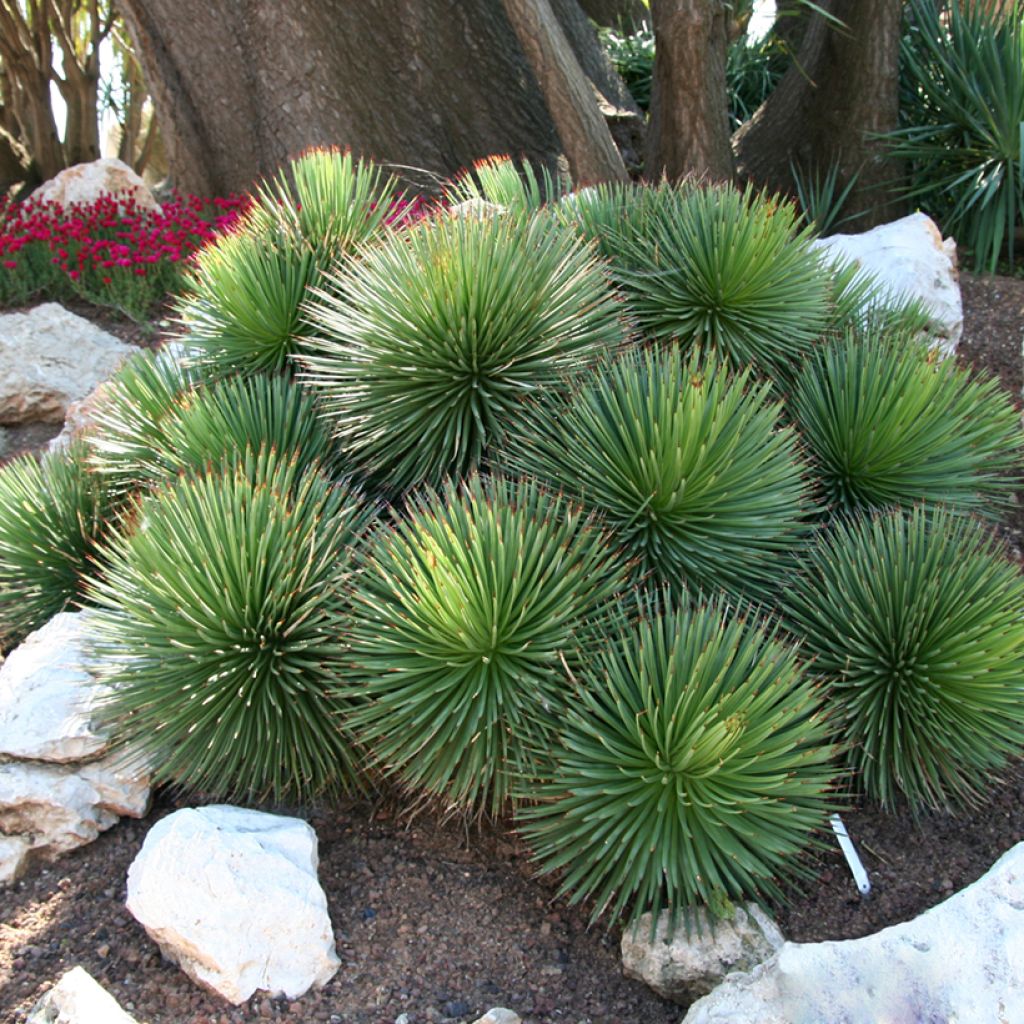

Agave stricta
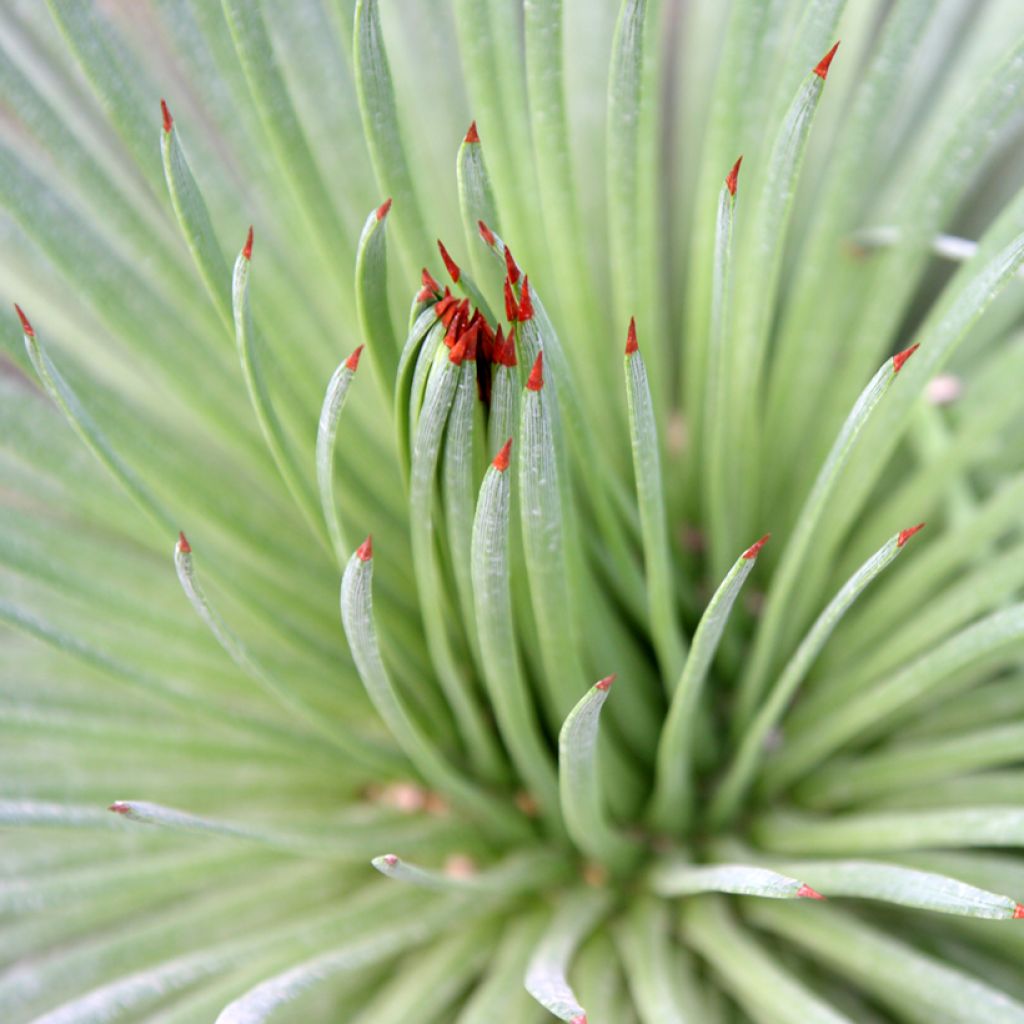

Agave stricta
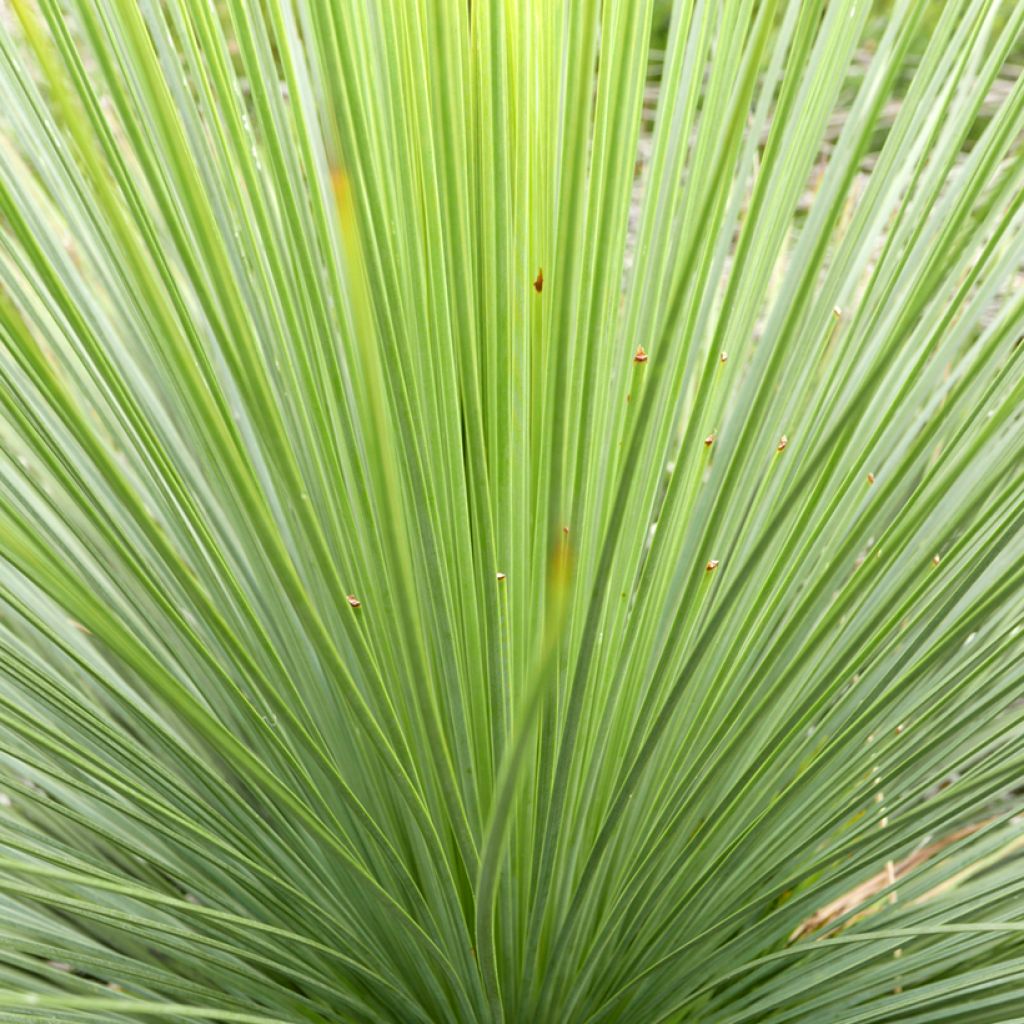

Agave stricta
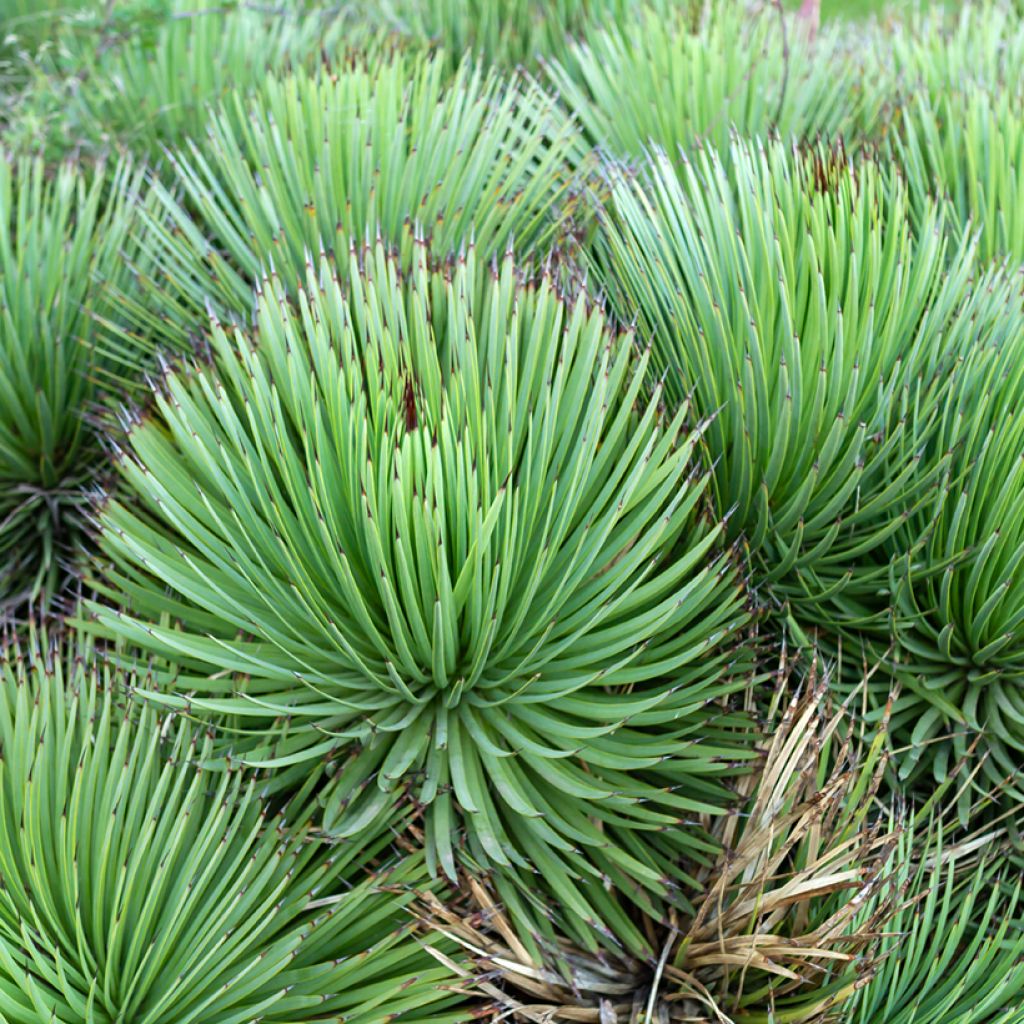

Agave stricta
Agave stricta
Agave stricta
Hedgehog Agave
Special offer!
Receive a €20 voucher for any order over €90 (excluding delivery costs, credit notes, and plastic-free options)!
1- Add your favorite plants to your cart.
2- Once you have reached €90, confirm your order (you can even choose the delivery date!).
3- As soon as your order is shipped, you will receive an email containing your voucher code, valid for 3 months (90 days).
Your voucher is unique and can only be used once, for any order with a minimum value of €20, excluding delivery costs.
Can be combined with other current offers, non-divisible and non-refundable.
Why not try an alternative variety in stock?
View all →This plant carries a 12 months recovery warranty
More information
We guarantee the quality of our plants for a full growing cycle, and will replace at our expense any plant that fails to recover under normal climatic and planting conditions.
Would this plant suit my garden?
Set up your Plantfit profile →
Description
Agave stricta is a very ornamental botanical species with an almost surreal geometric design. This compact Agave forms an almost perfect sphere about fifty centimetres in diameter. Its very fine leaves are a beautiful bright green, sometimes tinged with grey-blue and ending in a reddish to greyish thorn. From the age of 6 to 8 years, the plant produces in summer a flower spike over 2 m tall, covered with small red flowers. Very well-suited to drought and full sun, this Agave shows good hardiness (-12°C or less) provided it is planted in very well-draining soil.
Formerly classified within the Agavaceae, the genus Agave has been moved in modern systematics to the Asparagaceae family, where it coexists with many other genera in our gardens (Yucca, Scilla, Ruscus, etc.). Rich with several hundred species native to the American continent, Agaves form compact (12 cm) to giant (over 3 m) rosettes, either sitting on the ground or perched on a short trunk (still 3 m tall in Agave decipiens...).
Agave stricta is a wild species native to southern Mexico, where it grows naturally around the city of Tehuacan, in the state of Puebla (200 km southeast of Mexico City). This perennial plant loves dryness and heat above all, while still tolerating the cold. Growing at medium altitude, between 1300 and 1600 m, it is capable of withstanding, in very well-draining soil conditions, dry frosts of around -12° to -14°C. Resembling Agave striata, with which it should not be confused, it is even more compact since it will not exceed 50 to 60 cm in diameter. Agave stricta forms a perfect sphere, made up of 30 to 40 cm long leaves, spread out in all directions, like the spines of a hedgehog, hence its synonym Agave hystrix (hystrix meaning porcupine in Latin). The rush-like leaves have a half-moon cross-section, and their edges are micro-dentate, while their surface is heavily striped. As with most species, they are tipped with a very slender, formidable thorn measuring 1 cm, reddish then grey. Their epidermis is most often a beautiful bright green, and in some specimens, it may slightly shift towards a bluish grey. The leaves have a slight curve that enhances the visual and aesthetic impact of the rosette. Growth is quite slow and the plant produces few offsets, nevertheless over time it eventually forms a small colony of a few "hedgehogs" that allow it to cover a metre or more in width. In addition to its remarkable aesthetics, this Agave has the advantage of flowering quite young. The flower spike is spectacular, measuring 2 to 3 m tall; the upper half consists of a giant spike made up of hundreds of small reddish flowers. This natural candelabra is visible from afar and draws attention in the garden.
Easy to cultivate due to its quite adequate hardiness, the Hedgehog Agave will bring an exotic touch. Only the cold regions of the east and north will be too hostile in winter, and it will then need to be grown in a pot to be overwintered under cover. An even more compact cultivar is available, Agave stricta 'Nana'. Everywhere else, you can grow this beautiful Agave in a south-facing rockery setting, exposed to full sun in soil enriched with sand and draining materials. Pair it with other plants in the same spirit, such as Hesperaloe, nicknamed Red Yucca, with its magnificent red flowering in summer. To vary the shapes, add to your scene a specimen of Opuntia engelmanii var. rastrera, an extremely hardy "prickly pear" with admittedly ephemeral but superb flowering.
Agave stricta in pictures




Flowering
Foliage
Plant habit
Botanical data
Agave
stricta
Asparagaceae
Hedgehog Agave
Agave echinoides , Agave hystrix
Central America
Other Agave
View all →Planting and care
Plant Agave stricta in full sun. Place it in well-draining soil, even if it is poor, stony, chalky, or sandy: it does not tolerate winter moisture and cold well, but fares much better in dry cold, in dry soil. It is preferable to protect this plant from moisture in regions with rainy and cold winters by using a temporary, waterproof shelter that allows light to pass through, such as a transparent plastic sheet. While this setup may not be aesthetically pleasing, it may save the plant's life. Since it tolerates summer drought perfectly, you could, for example, dig a 50 cm pit, fill it with a mixture of gravel and light soil, and plant the agave, ensuring its collar is isolated from stagnant water. The drier the soil, the more resistant it will be to frost, down to approximately -12 to -14°C.
As the plant has a fairly modest growth, it can be grown in a pot on a terrace or balcony, in a light substrate such as cactus soil, with particularly careful drainage, preferably in a terracotta pot. Water regularly in summer, but allow the substrate to dry out between waterings. It will then be easy to store the pot away from severe frost and moisture, in a bright, airy, and minimally heated space. Reduce or even stop watering in winter. The plant can spend the warmer season, from April to October, outdoors.
Always wear protective gloves when handling this plant and be very careful with your eyes, as the terminal thorns of the leaves are formidable!
Planting period
Intended location
Care
Planting & care advice
This item has not been reviewed yet - be the first to leave a review about it.
Similar products
Haven't found what you were looking for?
Hardiness is the lowest winter temperature a plant can endure without suffering serious damage or even dying. However, hardiness is affected by location (a sheltered area, such as a patio), protection (winter cover) and soil type (hardiness is improved by well-drained soil).

Photo Sharing Terms & Conditions
In order to encourage gardeners to interact and share their experiences, Promesse de fleurs offers various media enabling content to be uploaded onto its Site - in particular via the ‘Photo sharing’ module.
The User agrees to refrain from:
- Posting any content that is illegal, prejudicial, insulting, racist, inciteful to hatred, revisionist, contrary to public decency, that infringes on privacy or on the privacy rights of third parties, in particular the publicity rights of persons and goods, intellectual property rights, or the right to privacy.
- Submitting content on behalf of a third party;
- Impersonate the identity of a third party and/or publish any personal information about a third party;
In general, the User undertakes to refrain from any unethical behaviour.
All Content (in particular text, comments, files, images, photos, videos, creative works, etc.), which may be subject to property or intellectual property rights, image or other private rights, shall remain the property of the User, subject to the limited rights granted by the terms of the licence granted by Promesse de fleurs as stated below. Users are at liberty to publish or not to publish such Content on the Site, notably via the ‘Photo Sharing’ facility, and accept that this Content shall be made public and freely accessible, notably on the Internet.
Users further acknowledge, undertake to have ,and guarantee that they hold all necessary rights and permissions to publish such material on the Site, in particular with regard to the legislation in force pertaining to any privacy, property, intellectual property, image, or contractual rights, or rights of any other nature. By publishing such Content on the Site, Users acknowledge accepting full liability as publishers of the Content within the meaning of the law, and grant Promesse de fleurs, free of charge, an inclusive, worldwide licence for the said Content for the entire duration of its publication, including all reproduction, representation, up/downloading, displaying, performing, transmission, and storage rights.
Users also grant permission for their name to be linked to the Content and accept that this link may not always be made available.
By engaging in posting material, Users consent to their Content becoming automatically accessible on the Internet, in particular on other sites and/or blogs and/or web pages of the Promesse de fleurs site, including in particular social pages and the Promesse de fleurs catalogue.
Users may secure the removal of entrusted content free of charge by issuing a simple request via our contact form.
The flowering period indicated on our website applies to countries and regions located in USDA zone 8 (France, the United Kingdom, Ireland, the Netherlands, etc.)
It will vary according to where you live:
- In zones 9 to 10 (Italy, Spain, Greece, etc.), flowering will occur about 2 to 4 weeks earlier.
- In zones 6 to 7 (Germany, Poland, Slovenia, and lower mountainous regions), flowering will be delayed by 2 to 3 weeks.
- In zone 5 (Central Europe, Scandinavia), blooming will be delayed by 3 to 5 weeks.
In temperate climates, pruning of spring-flowering shrubs (forsythia, spireas, etc.) should be done just after flowering.
Pruning of summer-flowering shrubs (Indian Lilac, Perovskia, etc.) can be done in winter or spring.
In cold regions as well as with frost-sensitive plants, avoid pruning too early when severe frosts may still occur.
The planting period indicated on our website applies to countries and regions located in USDA zone 8 (France, United Kingdom, Ireland, Netherlands).
It will vary according to where you live:
- In Mediterranean zones (Marseille, Madrid, Milan, etc.), autumn and winter are the best planting periods.
- In continental zones (Strasbourg, Munich, Vienna, etc.), delay planting by 2 to 3 weeks in spring and bring it forward by 2 to 4 weeks in autumn.
- In mountainous regions (the Alps, Pyrenees, Carpathians, etc.), it is best to plant in late spring (May-June) or late summer (August-September).
The harvesting period indicated on our website applies to countries and regions in USDA zone 8 (France, England, Ireland, the Netherlands).
In colder areas (Scandinavia, Poland, Austria...) fruit and vegetable harvests are likely to be delayed by 3-4 weeks.
In warmer areas (Italy, Spain, Greece, etc.), harvesting will probably take place earlier, depending on weather conditions.
The sowing periods indicated on our website apply to countries and regions within USDA Zone 8 (France, UK, Ireland, Netherlands).
In colder areas (Scandinavia, Poland, Austria...), delay any outdoor sowing by 3-4 weeks, or sow under glass.
In warmer climes (Italy, Spain, Greece, etc.), bring outdoor sowing forward by a few weeks.






























